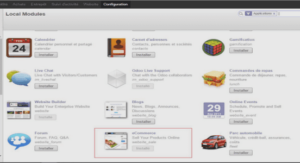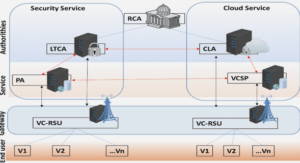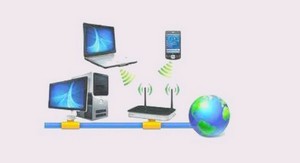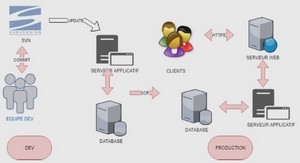Introduction
Once known only to researchers and true hackers, the TCP/IP stack of communications protocols has risen to prominence along with the explosion of the Internet and the World Wide Web. It seems every PC these days comes with dial-up protocol software for Net access, and every LAN and WAN has a gateway into the TCP/IP Internet world. Many companies and individuals are setting up Web servers on desktop computers using shareware or the latest commercial server software packages.
The proliferation of computers accessing the public Internet is itself sufficient reason for network and information systems professionals to want to master the ins and outs of TCP/IP. An even more pressing reason, however, is the increasing use of private and public TCP/IP networks to link corporate networks into enterprise-wide, distributed computing and information systems. Mission-critical corporate applications require new levels of security, throughput, and reliability. As you’ll see throughout this book, the TCP/IP protocol suite has been evolving to meet those challenges.
There are new opportunities to exploit as well—technologies such as interactive multimedia conferencing and object- and component-based Java and ActiveX applications. These, too, place new demands on the network infrastructure.
Inside this book, you’ll find answers to many of the questions you might have about the TCP/IP stack. If you are new to packet-switched approaches, this book will help you master the concepts and architecture of a leading technology. If you’ve been working with TCP/IP-based networks, you will find useful information on recent extensions that support new forms of multimedia, multicasting, and multiple protocol/interoperable networks, along with enhanced addressing and security features. You’ll also find out where to get more information and how to stay abreast of rapidly changing communications standards.
The History of TCP/IP
By now, many computer professionals are familiar with at least some of the history behind the development of the TCP/IP protocol stack. In the mid-1960s, the dominant computing technology consisted of transistor-based mainframes with proprietary operating systems. The Department of Defense (DOD), noting that the development of Integrated Circuit chips (ICs) was in turn enabling the development of powerful minicomputers, foresaw the potential for a distributed military communications and control system using switched telephone lines. Through its Defense Advanced Research Projects Agency (DARPA), DOD funded research for advanced computing and communications technologies that resulted in a prototype packet-switched network called the ARPANET.
(DARPA’s role in advancing data communications and computing was not limited to the ARPANET project; other areas of funding included extensive research into robotics, artificial intelligence, high-density chip design/manufacture, massively parallel computer architectures, and Reduced Instruction Set (RISC) CPUs, among other topics. Most of the resulting technology has found its way into leading commercial products.
The TCP/IP Protocol Stack
A stack architecture divides out the functionality of a data communications capability into discrete layers. Rather than tightly coupling the hardware interface with addressing, for instance, the stack model deliberately identifies a separate interface through which these functions shall cooperate, thereby incurring some inefficiency in order to isolate not only implementation details, but the whole design of one layer from that of another.
Figure 1.1 shows the comprehensive OSI architecture model. The higher
layers are less well defined than those at the bottom of the OSI stack, which is not surprising given the breadth of applications to which they must apply.In comparison, the complexity involved in the lower levels of the stack consists of independent protocols to support specific hardware interfaces,transport mechanisms, and so forth.
The Internet Protocol
As the name implies, IP is designed to route traffic between networks—that is, across a network of networks. Applications running on a client machine or a LAN generate messages to be sent to a machine residing on another network. IP receives these messages from the transport layer software residing on a server that provides the gateway from the LAN or WAN onto the Internet (or other TCP/IP network).
The addressing function embedded in IP embodies the topology of the Internet as a whole. IP addresses consist of a network identifier and a host (server) identifier, with the capability to designate subnetworks as necessary. Thus, at least one combination of network and host identifier is associated with each node on an IP-based network such as the Internet.
Not all nodes on the network are end-user machines or gateways to LANs and WANs. Some nodes are devoted to routing packets along the various potential pathways from the sending node to the receiving node. This approach differs from other network architectures in several ways.
Many LANs are based on a broadcast/collision model. Ethernet-based networks, for instance, simply tell everything to everyone; each machine onthe LAN listens for the traffic that is relevant to itself and ignores the rest.Computers on a Token Ring LAN take turns listening and broadcasting.
….
Cours réseaux informatiques (19478 KO) (Cours DOC)





